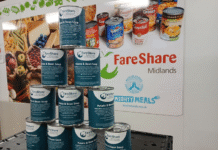
In the 1970s, the white revolution, or operation flood as it was popularly known, transformed India from a milk-deficient nation to the world’s largest milk producer – 198.4 million tonnes in 2020 as per the National Dairy Development Board.
In the past decade, along with increased purchasing power and radical changes in lifestyle-related consumption, another revolution has been brewing in the dairy industry. In supermarkets and department stores the milk display shelves are getting bigger, better and grander, replete with brands offering an assortment of packaged milk in new flavors and formats as well as an assortment of milk-based products. Even traditional kirana stores now have refrigerated storage with display shelves.
Milk, fresh cream, and buttermilk in Tetrapaks and poly packs; cheese in pouches, cans with lids, trays and paper packs; butter in paper packaging; curd, yogurt, srikhand, and cheese and sandwich spreads in disposable polypropylene cups; ghee in tin cans and plastic containers with lids; flavored milk in glass and PET bottles, cans and Tetrapaks – the list goes on and on.
Cheese revolution
One product that has seen a radical rise in demand in a rather alien market, traditionally known to consume paneer (cottage cheese) and dahi, is cheese. A few decades ago, cheese would be limited to small, processed cubes packed in foil or tins – mostly from Amul. Now you need not go to Italy, Switzerland, Greece or upscale stores to get good-quality variants and not only made from cow and buffalo milk but also from goat milk.
Feta, cheddar, mozzarella, bocconcini, brie, cream cheese, emmental, Gouda, ricotta, mascarpone, parmesan, and burrata are no longer strange tongue-twisters but common parlance in every urban cheese-loving family. While biggies such as Amul, Britannia, and Mother Dairy offer popular varieties such as mozzarella, cheddar or blended cheese, niche names such as Delecta, Dairy Craft, Acres Wild, La Ferme, Flanders Dairy, Kodai Cheese or ABC Farms focus on gourmet delights. Each of these cheeses is now available in flavored variety that may include black and red pepper and other herbs and spices.
But more than the varieties, it is the packaging that draws the customers to the neatly arranged refrigerated shelves with glass doors – a stark contrast to the earlier days when cheese and butter would be stored in deep freezers with lift-and-open doors and you had to rummage through the stock stacked one on top of the other haphazardly.
Now cheese comes in pouches, plastic containers with lids, and trays with covers in ready-to-use diced, grated, granules or sliced format and even easy spreads, making its use mess-free – a departure from the days when you would have to run cheese blocks over a grater and a chunk of it would fall off the sandwich or pizza. The containers and trays are also easy to store in comparison to the ubiquitous blocks that come wrapped in foil with paper packaging on top, which always gets soggy inside the fridge.
Milk is no longer just white

Another product that has undergone a complete change both in its content and packaging is milk itself. Remember the days when the milkman would come to the door early morning – he still does – with loose milk in huge aluminum containers and your mom would boil it straightway lest it gets spoiled?
Now you get pasteurized milk in poly packs that you can refrigerate without bothering to boil. Or the homogenized UHT milk stored in sterile aseptic cartons that you don’t even need to put in the fridge for 180 days if not opened – convenient if you are traveling with a child. The milk varieties have also increased – toned, double-toned, full-cream added calcium, camel milk, flavored, colored, lactose-free, slim, diet, buffalo, and cow.
Glass bottles, which are recyclable and can be reused, are also making a slow comeback, mostly for flavored milk. In Delhi-NCR and other metros, niche sellers of quality and unadulterated milk offer returnable glass bottles that are sterilized in and refilled in automated plants.
Curd and yogurts
A third product to grab a lion’s share of the store shelves is packaged and hygienic curd, yogurt and lassi. In fact, packed curd is preferred and available even in neighborhood kirana stores because it is mess-free in comparison to the loose variety that is sold in non-food grade plastic pouches.
And it’s no longer the plain old curd – you have probiotic, fruit, sweet, flavored, lassi, buttermilk, low fat, rich and creamy and mishti doi in colorful poly packs, and leak-proof and sealed recyclable throw-away high-density polyethylene or polypropylene cups in different sizes with some interesting creatives to draw customers. Some even come in containers with lids and handles, which you can reuse to store masala or other stuff later on. So you can get a small 100 gm dahi that you can have with your lunch or a 1 kg pack or container for the entire family.
And it’s not just about what’s inside the containers. The labels on the packaging, apart from having catchy creatives, also inform the buyer about the nutritional content, list of ingredients, net weight, product use, place of origin, name of the manufacturer, date of manufacture, bar code, etc. – all in all, a complete piece of information.
Cheese dosas and parathas
The cheese market in India reached Rs 7,100 crore in 2022. Research companies estimate that the market is growing at a CAGR of 20 to 24%, which would take it Rs25,000 crore or higher by 2028.
With the rising influence of western cuisines and disposable incomes, consumers are shifting from paneer towards cheese. Makers are also introducing flavored cheese such as pepper, garlic, red chili flakes, and oregano pickle to cater to the different tastes and preferences.
The fast food industry’s growth is also augmenting the demand for cheese. Cheese is used in fast food items such as pasta, pizzas, burgers, sandwiches, wraps, tacos, cakes, and garlic bread as well in traditional Indian recipes such as dosa, uttapam and parathas.
With pizza becoming a staple in the Indian diet, the ready-to-heat and eat frozen pizza market is expected to reach Rs 14,000 crore (US$ 1.84 billion) by 2027. Global players are also investing in the Indian cheese market.
IndiFoodBev — authentic, impactful and influential
An English-language food and beverage processing and packaging industry B2B platform in print and web, IndiFoodBev is in its third year of publication. It is said that the Indian food and beverage industries represent approximately US$ 900 billion in revenues which implies more than 20% of the country’s GDP. Eliminating the wastage on the farmside can help to deliver more protein to a higher number of the population apart from generating sizable exports. The savings in soil, seeds, water, fertilizer, energy and ultimately food and nutrition could be the most immense contribution that country is poised to make to the moderation of climate change.
To improve your marketing and grow sales to the food and beverage processing and packaging industry, talk to us. Our research and consulting company IppStar [www.ippstar.org] can assess your potential and addressable markets in light of the competition. We can discuss marketing, communication, and sales strategies for market entry and growth.
Suppliers and service providers with a strategy and budget for targeted marketing can discuss using our hybrid print, web, video, and social media channels to create brand recognition linked to market relevance. Our technical writers are ready to meet you and your customers for content.
The second largest producer of fruit and vegetables in the world is continuously expanding processing capacities and delivery systems with appropriate innovative technologies. We cover product and consumer trends, nutrition, processing, research, equipment and packaging from farm to thali. Get our 2025 media kit and recalibrate your role in this dynamic market. Enhance your visibility and relevance to existing markets and turn potential customers into conversations. Ask for a sample copy of our bi-monthly in print or our weekly IndiFoodBev eZine each Wednesday.
For editorial info@ippgroup.in — for advertisement ads1@ippgroup.in and for subscriptions subscription@ippgroup.in
Naresh Khanna – 10 February 2025
Subscribe Now










